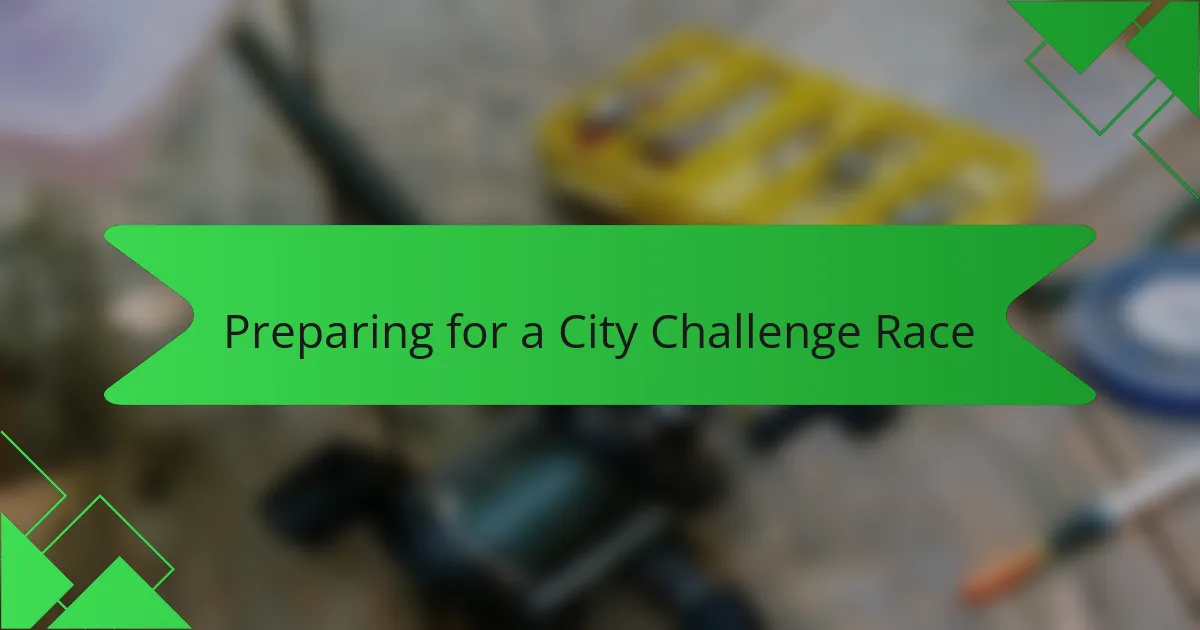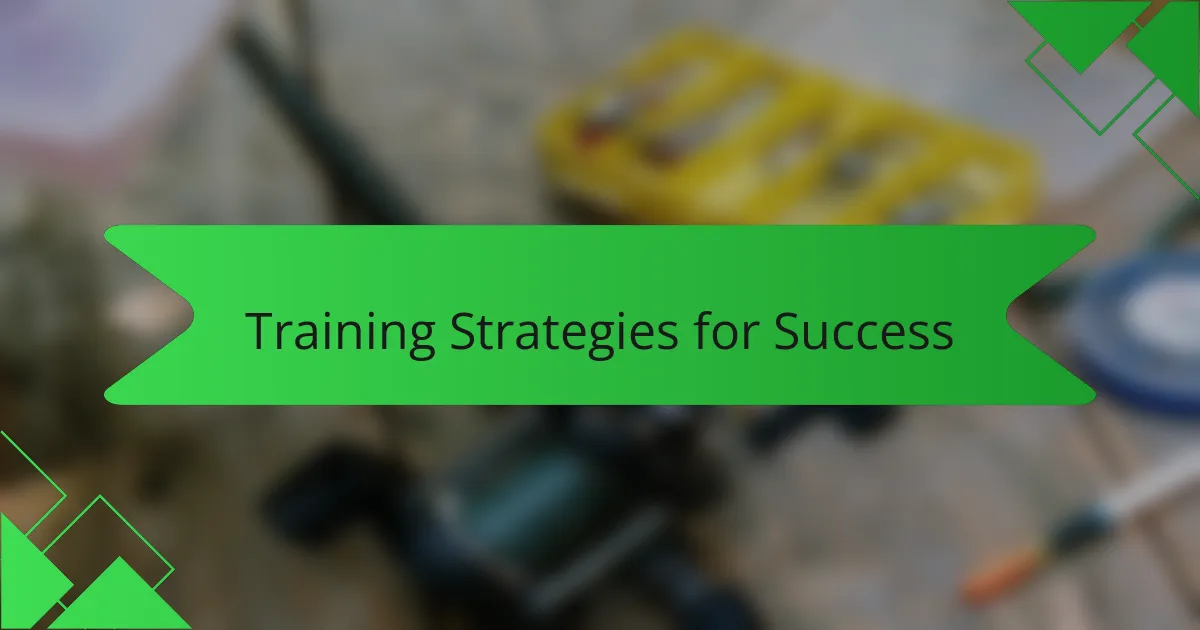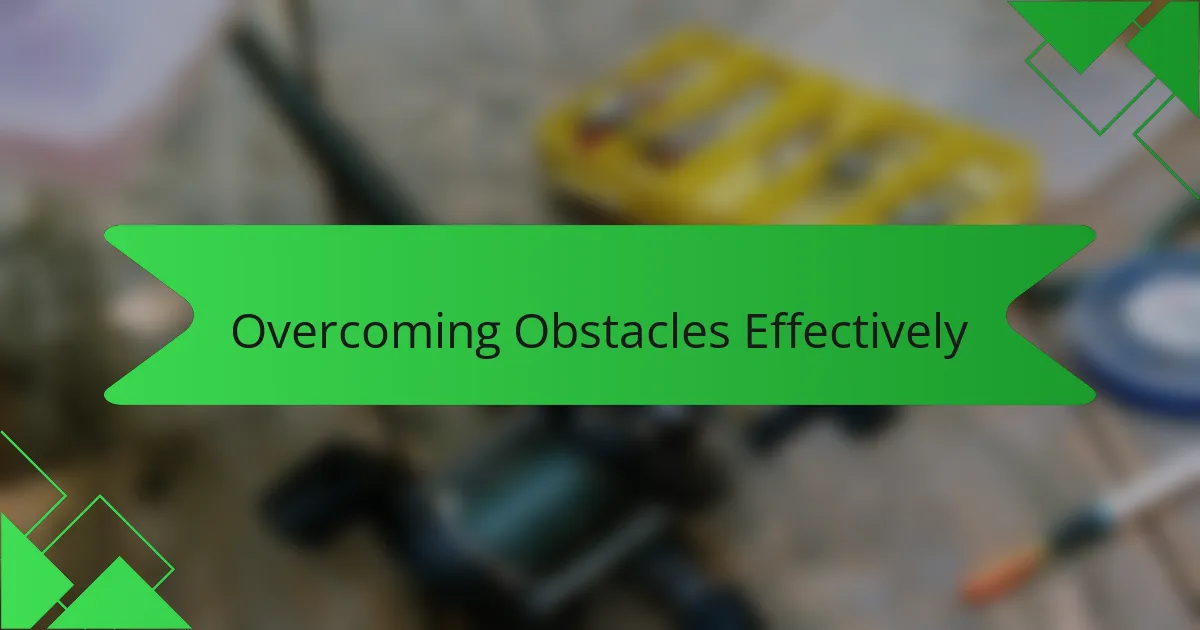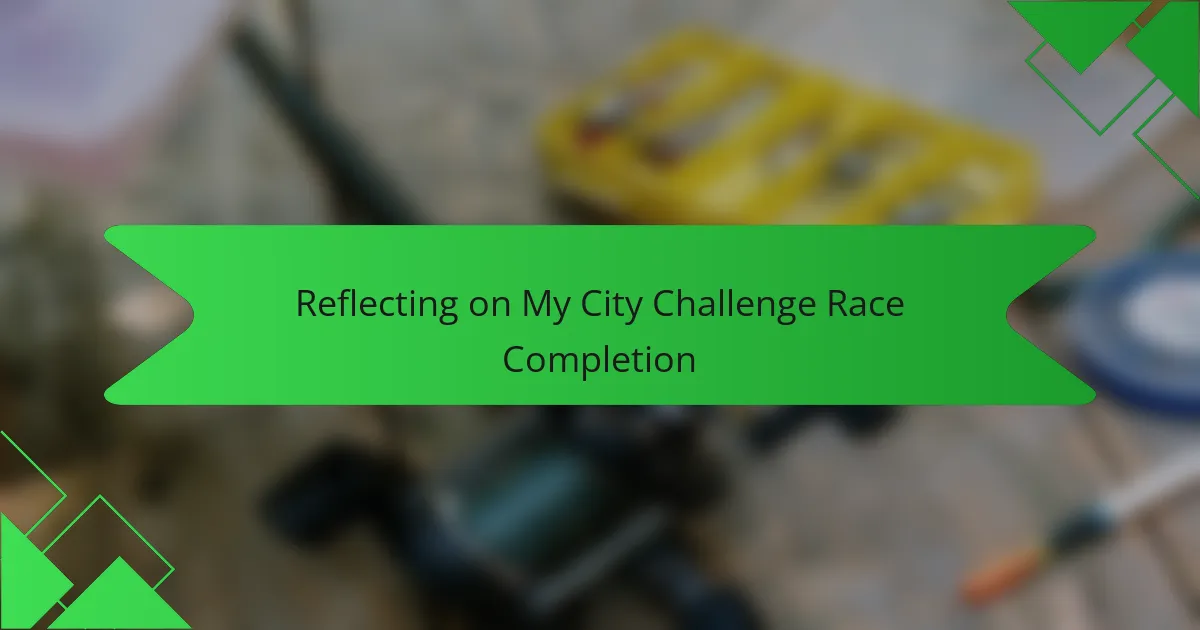Key takeaways
- Obstacle Course Racing (OCR) combines physical challenges with mental strategy, emphasizing resilience and adaptability.
- Preparation for races includes studying course layouts, training on varied terrains, and focusing on mental readiness and equipment choice.
- Effective obstacle navigation requires calmness, momentum management, and breaking challenges into smaller, achievable steps.
- The race day experience is enhanced by proper hydration, visualization techniques, and the support of fellow competitors, making it both challenging and fulfilling.

What is Obstacle Course Racing
Obstacle Course Racing, or OCR, is a sport that combines running with a variety of physical challenges like climbing, crawling, and jumping. From my experience, it’s not just about speed but also about strategy and mental toughness—each obstacle pushes you to test your limits in different ways. Have you ever wondered what it feels like to conquer a wall that seemed impossible just moments before? That thrill is what keeps me coming back.

Preparing for a City Challenge Race
Preparing for a City Challenge Race took more than just physical training; it demanded mental readiness and strategic planning. I remember feeling overwhelmed at first, but breaking down the preparation into manageable steps helped me gain confidence and stay focused on my goal.
One essential part of my prep was familiarizing myself with the course layout and obstacles, understanding that urban environments bring unique challenges like uneven pavements and tight spaces. This insight pushed me to adapt my training to mimic those conditions, which made a huge difference on race day.
Here’s what worked best for me in preparing for a City Challenge Race:
- Study the race map thoroughly to know where key obstacles are located.
- Incorporate functional fitness workouts that build agility and balance.
- Practice running on different urban terrains, such as stairs, concrete, and gravel.
- Pack gear that suits city conditions, like sturdy shoes with good grip and gloves.
- Visualize the race progress to build mental resilience and reduce anxiety.
- Get plenty of rest in the days leading up to the event to ensure peak energy.
Focusing on these areas made me feel ready and excited, not just physically prepared but mentally sharp and ready to tackle whatever the race threw at me.

Essential Equipment and Gear
Essential Equipment and Gear
Choosing the right gear made all the difference during my City Challenge Race. I quickly learned that lightweight, moisture-wicking clothes kept me comfortable, while sturdy trail shoes gave me the grip and support I desperately needed. Without the right equipment, the obstacles would have felt much harder, and I might have lost my pace.
| Equipment | Why It Matters |
|---|---|
| Trail Running Shoes | Provide grip on slippery and uneven surfaces; crucial for stability during obstacles. |
| Moisture-Wicking Clothing | Keeps you dry and prevents chafing, which helps maintain comfort throughout the race. |
| Lightweight Gloves | Protect hands during climbs and rope obstacles without sacrificing dexterity. |
| Hydration Pack | Allows quick access to water, essential for endurance on longer courses. |

Training Strategies for Success
Training with a clear goal in mind made all the difference for me. I focused on building endurance and functional strength, mixing running with bodyweight exercises that mimic the obstacles. This approach kept me motivated because I could see my progress week by week, and it made race day feel achievable rather than intimidating.
I also found that simulating race conditions during training helped me adapt both physically and mentally. It wasn’t just about muscle power; mental resilience grew when I practiced pushing through discomfort. That mental edge played a big role in crossing the finish line.
| Training Focus | Benefits |
|---|---|
| Endurance Running | Boosts cardiovascular fitness for sustained effort |
| Functional Strength Exercises | Prepares muscles for obstacle-specific movements |
| Obstacle Simulation | Builds confidence and mental toughness |
| Recovery Days | Prevents burnout and supports muscle repair |

Overcoming Obstacles Effectively
When I faced those tough obstacles in the City Challenge Race, staying calm under pressure was my game changer. I remember the wall climb that at first seemed impossible; breaking it down into small, manageable steps helped me push through, even when my muscles screamed to stop.
Navigating obstacles effectively requires not just physical strength but mental agility. I found myself constantly adapting my strategy, learning from each challenge on the fly, which kept me motivated and focused throughout the race.
- Assess each obstacle quickly to plan your best approach.
- Use momentum wisely to conserve energy.
- Break daunting tasks into smaller, achievable steps.
- Stay mentally flexible and adjust tactics mid-race.
- Keep a positive mindset to overcome fear and fatigue.

Race Day Experience and Tips
Race day hit differently than any training session I’d had before. The buzz of the crowd mingled with my nerves, but I reminded myself to pace calmly—rushing too fast early on only leads to burnout later. Have you ever felt that mix of adrenaline and calm focus right before a big challenge? That’s exactly what carried me through the urban maze and obstacles.
One thing I learned quickly is that hydration and quick energy snacks aren’t just nice-to-haves; they’re essential. I made sure to sip water regularly and grab small bites at aid stations, which kept my energy steady without weighing me down. It’s amazing how something so simple can completely change how you feel halfway through the race.
When obstacles felt overwhelming, I gave myself permission to pause, take a breath, and visualize the next move. That mental reset was crucial—trying to muscle through exhaustion never worked for me. Staying present and breaking the course into smaller chunks made each challenge feel doable, which kept my spirits high and my legs moving forward.

Reflecting on My City Challenge Race Completion
Crossing the finish line of my City Challenge Race was a mix of relief and pride. I remember feeling my legs ache from the relentless urban obstacles, but the rush of accomplishment made it all worthwhile. That moment reminded me why I take on these races—the blend of physical grit and mental toughness is unlike anything else.
Looking back, the support from fellow runners and the vibrant city atmosphere gave me an extra boost when fatigue hit hardest. It wasn’t just about the race; it was about pushing through discomfort and discovering what I’m truly capable of.
- Urban obstacles tested my balance and agility in ways trail races never did
- Navigating crowds and uneven pavements added an unexpected layer of challenge
- Moments of doubt crept in but were outweighed by bursts of adrenaline and encouragement
- Each checkpoint crossed felt like a small victory building up to the finish
- The sense of community among competitors made the experience deeply rewarding
